Tattoo styles are diverse and unique artistic expressions. Are you curious about the world of tattoo art and looking to understand the diverse range of tattoo styles available? At tattooat.com, we will explore numerous options, from traditional to contemporary, assisting you in discovering the perfect style to express your individuality and artistic vision. Uncover hidden gems of unique inking ideas, body art designs, and personalized tattoo artwork today.
1. What Exactly Defines a Tattoo Style?
A tattoo style is the specific artistic approach used to create a tattoo, influencing its overall appearance and aesthetic. It’s about the visual language of the tattoo, not the subject itself. Just as you can distinguish a Van Gogh from a Monet regardless of whether they’re both painting landscapes, tattoo styles provide distinct visual cues. For example, the same dragon can look completely different when rendered in a Japanese style versus a traditional American style. This allows for immense personalization and creative expression in body art. According to research from Portland State University’s Art Department, in July 2023, tattoo styles influence the perception and emotional impact of the tattoo on both the wearer and the observer.
2. What Are Some of the Most Popular Tattoo Styles?
Many styles exist, each with distinct characteristics. Here are some popular tattoo styles:
2.1. Traditional American (Old School)
Known for bold outlines, bright colors, and classic motifs. Traditional American tattoos, often called “Old School,” evoke nostalgia and timeless appeal. Think of iconic images like anchors, roses, and eagles, rendered with thick black lines and a limited color palette. This style has roots in the early 20th century and sailor culture. The strong lines and simple color schemes ensure the tattoo remains vibrant and legible for years to come. According to Inked Magazine, Traditional American remains one of the most requested styles, cherished for its longevity and boldness.
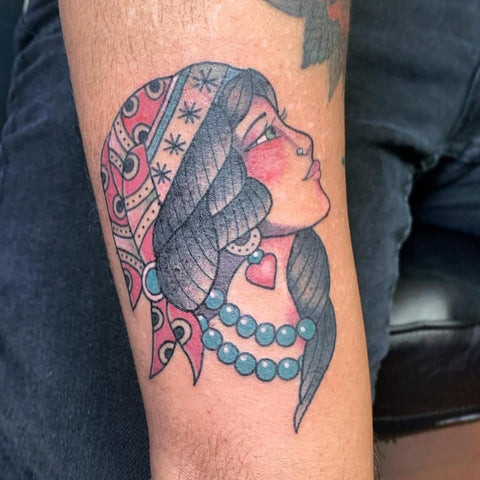 Traditional Tattoo Style Gypsy
Traditional Tattoo Style Gypsy
Traditional Tattoo Style by Sara showcases the classic bold lines and vibrant colors typical of this enduring style.
2.2. Neo-Traditional
A modern take on Traditional, incorporating finer lines, richer colors, and more illustrative details. Neo-traditional tattoos expand upon the foundation of the Old School style. This style can incorporate intricate details, a broader range of colors, and more complex shading techniques. Common elements include floral designs, portraits, and animal motifs. Neo-traditional tattoos often have a three-dimensional appearance due to the sophisticated use of shading and highlights.
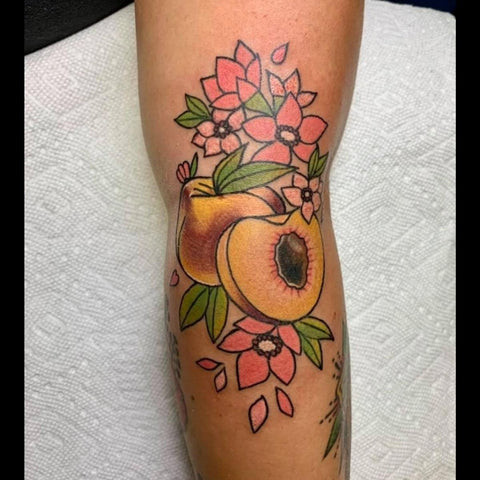 Neo Traditional Tattoo Style
Neo Traditional Tattoo Style
Neo-Traditional Tattoo Style by Sara blends classic elements with modern techniques, featuring finer lines and a richer color palette.
2.3. Fine Line
Characterized by delicate, thin lines and intricate details. Fine line tattoos offer a minimalist and elegant aesthetic. These tattoos often feature geometric designs, floral patterns, or delicate lettering. Due to the intricacy of the lines, fine line tattoos require a skilled artist with a steady hand. This style is popular for those seeking subtle and understated body art.
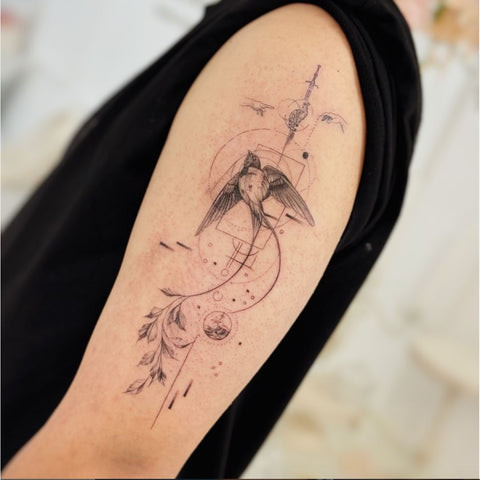 Fine Line Tattoo Style Different Tattoo Styles
Fine Line Tattoo Style Different Tattoo Styles
Fine Line Tattoo Style by Alex demonstrates the delicate precision of thin lines, creating intricate and subtle designs.
2.4. Pointillism (Dot Work)
Creates images using a series of tiny dots, offering a unique textured effect. Pointillism tattoos, also known as dot work tattoos, create images through carefully placed dots. This style requires patience and precision, as the density of the dots determines the shading and depth of the image. Pointillism tattoos can range from simple geometric patterns to complex, photorealistic portraits. The result is a visually stunning piece that appears to shimmer on the skin.
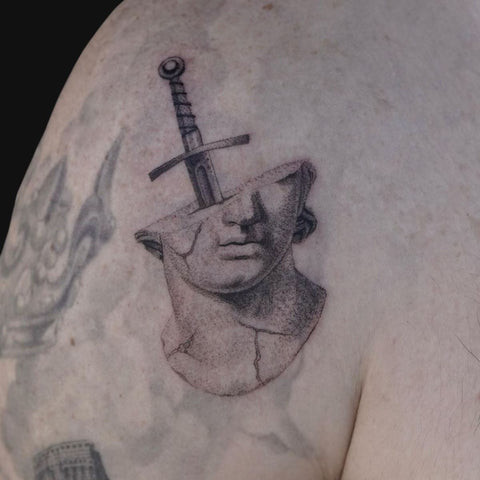 Pointillism Tattoo Style Different Tattoo Styles
Pointillism Tattoo Style Different Tattoo Styles
Pointillism Tattoo Style by Sage illustrates how a series of dots can create depth and texture, mimicking the pointillism art movement.
2.5. Tribal
Originating from indigenous cultures, featuring bold patterns and symbolic designs. Tribal tattoos hold deep cultural and historical significance. These tattoos often incorporate geometric patterns, stylized animal motifs, and symbols representing ancestry, status, or spiritual beliefs. Different cultures have unique tribal tattoo styles, such as Polynesian, Maori, and Native American. Tribal tattoos are powerful expressions of identity and heritage.
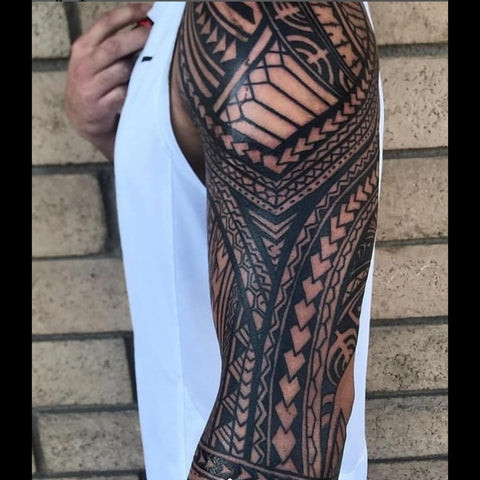 Tribal Style Tattoo
Tribal Style Tattoo
Tribal Tattoo Style by Eddie showcases the bold patterns and symbolic designs that reflect cultural heritage and personal identity.
2.6. Cybersigilism
Characterized by thin lines, sharp angles, and intricate patterns resembling circuitry and organic forms. Cybersigilism tattoos blend technology and nature, creating visually striking designs. These tattoos often feature geometric patterns, abstract shapes, and intricate line work. Cybersigilism tattoos can evoke a sense of futuristic aesthetics, appealing to those interested in technology and modern art.
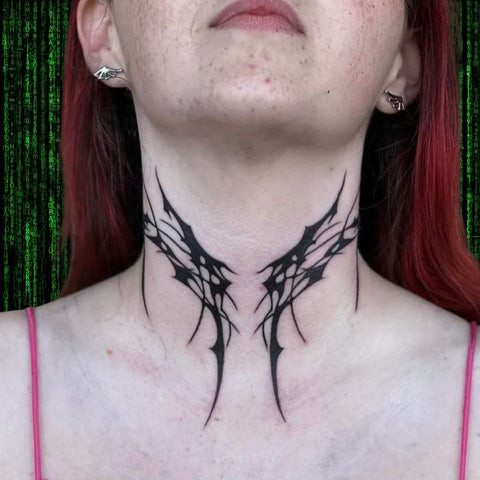 Cybersigilism Tattoo Different Tattoo Styles
Cybersigilism Tattoo Different Tattoo Styles
Cybersigilism Tattoo Style By Devon features sharp angles and thin lines, creating a modern, tech-inspired aesthetic.
2.7. Watercolor
Mimics the look of watercolor paintings, with soft colors and fluid designs. Watercolor tattoos are known for their delicate and ethereal appearance. These tattoos often lack bold outlines, allowing colors to blend and flow seamlessly across the skin. Watercolor tattoos can depict various subjects, from floral designs to abstract patterns. The key to a successful watercolor tattoo is the artist’s ability to create gradients and textures that mimic the fluidity of watercolor paint.
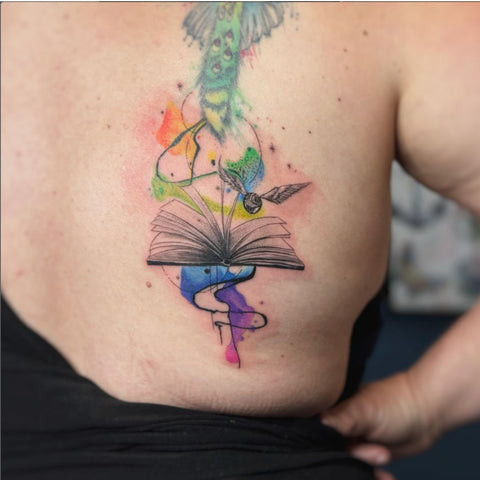 Water color Tattoo Style Different Tattoo Styles
Water color Tattoo Style Different Tattoo Styles
Watercolor Tattoo Style by Alex captures the fluid and soft aesthetic of watercolor paintings, blending colors seamlessly on the skin.
2.8. Blackwork
Uses only black ink to create bold, graphic designs. Blackwork tattoos are characterized by their use of solid black ink to create striking designs. These tattoos can range from simple geometric patterns to intricate, large-scale pieces covering entire limbs or the torso. Blackwork tattoos offer a bold and impactful aesthetic.
Blackwork Tattoo Style by Sarah demonstrates the power of solid black ink to create bold, graphic designs with high contrast.
2.9. Realism
Aims to replicate images with lifelike accuracy. Realism tattoos require exceptional skill and attention to detail. These tattoos can depict portraits, landscapes, or objects with stunning accuracy. Realism tattoos often require multiple sessions to achieve the desired level of detail. The result is a breathtaking piece of art that captures the essence of the subject with lifelike precision.
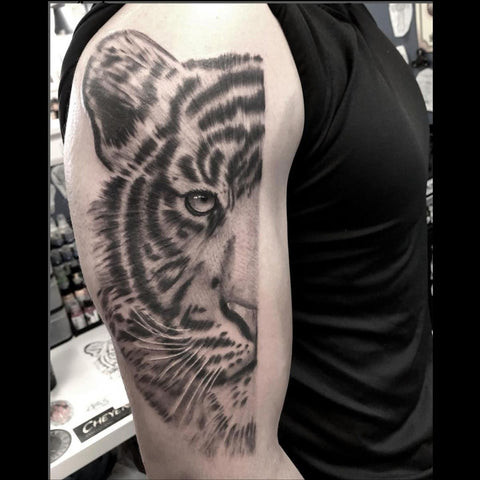 Realism Tattoo Style Realistic Tiger Tattoo
Realism Tattoo Style Realistic Tiger Tattoo
Realism Tattoo Style by Ryan showcases the lifelike accuracy achievable through detailed shading and precise replication of the subject.
2.10. Japanese (Irezumi)
Features traditional Japanese imagery, symbolism, and storytelling. Japanese tattoos, also known as Irezumi, are rich in symbolism and tradition. These tattoos often depict mythical creatures, such as dragons, koi fish, and phoenixes, along with floral elements like cherry blossoms and peonies. Japanese tattoos often cover large areas of the body, such as the back, arms, or legs. The placement and imagery of the tattoo tell a story, reflecting the wearer’s values, aspirations, or life experiences.
Japanese Tattoo Style by Eddie incorporates traditional imagery and symbolism, reflecting a deep cultural heritage and storytelling.
2.11. Trash Polka
Combines elements of realism, abstract art, and graphic design. Trash polka tattoos are characterized by their chaotic and collage-like appearance. These tattoos often feature contrasting elements, such as realistic portraits juxtaposed with abstract shapes and brushstrokes. The color palette is typically limited to black and red, enhancing the tattoo’s dramatic effect. Trash polka tattoos are bold and unconventional, appealing to those seeking unique and edgy body art.
Trash Polka Tattoo Style by Eddie blends realism with abstract and graphic elements, creating a chaotic yet cohesive visual statement.
2.12. Geometric
Emphasizes lines, shapes, and patterns. Geometric tattoos are known for their precision and symmetry. These tattoos often feature intricate patterns, mandalas, or geometric representations of natural forms. Geometric tattoos can be minimalist or complex, depending on the wearer’s preference. This style appeals to those who appreciate clean lines, mathematical precision, and visually striking designs.
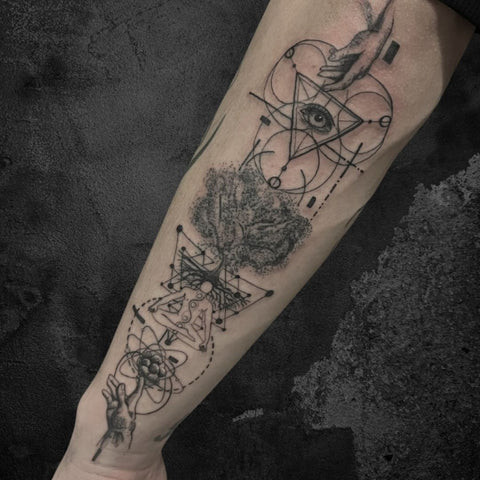 Geometric Tattoo Style Different Tattoo Styles
Geometric Tattoo Style Different Tattoo Styles
Geometric Tattoo Style By CC focuses on precise lines and shapes, creating visually appealing and symmetrical designs.
2.13. Patchwork
A collection of individual tattoos arranged on the body like a patchwork quilt. Patchwork tattoos offer a unique and personalized approach to body art. These tattoos consist of various smaller designs, each with its own distinct style and subject matter. Patchwork tattoos allow for creative freedom and the opportunity to showcase a diverse range of artistic styles. The arrangement of the tattoos can be random or carefully planned, reflecting the wearer’s personality and experiences.
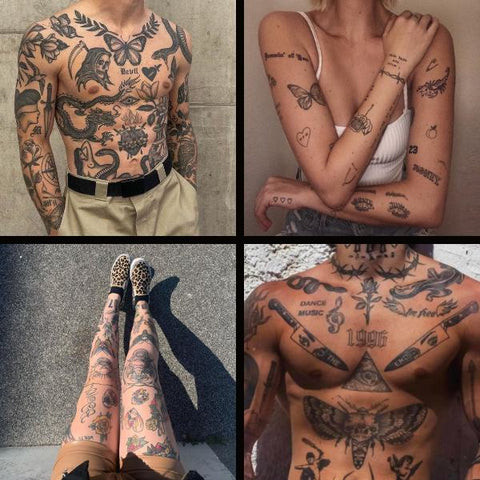 Patchwork Style Tattoos Different Tattoo Styles
Patchwork Style Tattoos Different Tattoo Styles
Patchwork Style Tattoos Different Tattoo Styles showcases a collection of various tattoos, creating a unique and personalized aesthetic.
2.14. Patch Tattoo
Resembles an embroidered patch, creating a three-dimensional effect on the skin. Patch tattoos mimic the appearance of embroidered patches, complete with stitching and fabric-like textures. These tattoos often depict cartoon characters, logos, or other pop culture icons. Patch tattoos offer a playful and nostalgic aesthetic. The key to a successful patch tattoo is the artist’s ability to create the illusion of depth and texture, making the tattoo appear as if it’s sewn onto the skin.
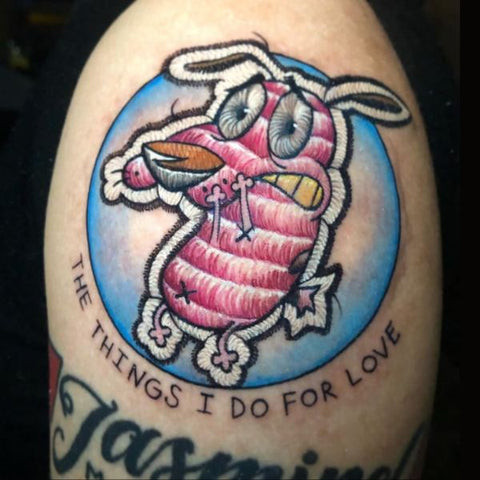 Patch Tattoo Style Different Tattoo Styles
Patch Tattoo Style Different Tattoo Styles
Patch Tattoo Style Different Tattoo Styles by Wulf creates the illusion of an embroidered patch, adding a unique, textured dimension to the tattoo.
2.15. Black and Grey
Uses only black ink and shades of grey to create depth and dimension. Black and grey tattoos are versatile and timeless. These tattoos rely on shading techniques to create depth, contrast, and realism. Black and grey tattoos can depict various subjects, from portraits to landscapes. This style is popular for its classic aesthetic and ability to create stunning visual effects.
Black and Grey Tattoo Style by Ryan demonstrates the use of shading to create depth and dimension, showcasing a timeless aesthetic.
2.16. Aesthetic
Focuses on creating visually pleasing and harmonious designs. Aesthetic tattoos encompass a wide range of styles and subjects, united by their emphasis on beauty and visual appeal. These tattoos often incorporate elements of nature, art, and spirituality. Aesthetic tattoos aim to evoke positive emotions and create a sense of harmony and balance. The choice of colors, composition, and subject matter are carefully considered to achieve a visually pleasing result.
Aesthetic Tattoo Style by Tacho focuses on visually pleasing designs that evoke beauty and harmony.
2.17. Ignorant
Characterized by simple, childlike drawings with a deliberately naive aesthetic. Ignorant tattoos embrace a raw and unfiltered aesthetic. These tattoos often feature simple line work, crude shading, and intentionally imperfect designs. Ignorant tattoos are a reaction against the polished and refined aesthetics of mainstream tattoo culture. This style appeals to those who appreciate authenticity, humor, and a rejection of conventional standards of beauty.
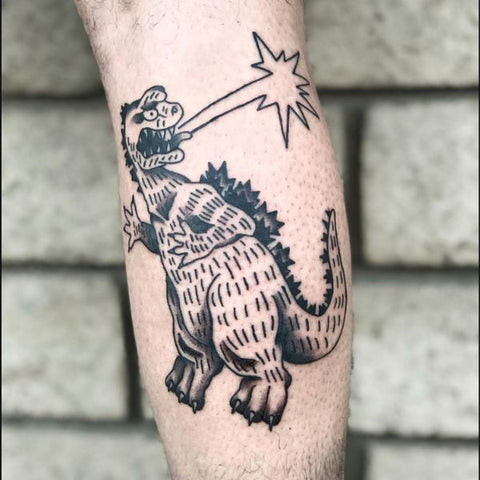 Dinosaur Ignorant Style Tattoo Ignorant Style Tattoo Ideas
Dinosaur Ignorant Style Tattoo Ignorant Style Tattoo Ideas
Ignorant Tattoo Style By Devon features simple, childlike drawings with a deliberately naive aesthetic.
2.18. Anime
Inspired by Japanese animation and comics. Anime tattoos capture the vibrant and dynamic aesthetics of Japanese animation. These tattoos often depict iconic characters, scenes, or symbols from popular anime series. Anime tattoos require a skilled artist who can accurately replicate the distinctive style of anime art, including bold lines, bright colors, and expressive features. This style appeals to fans of anime and manga who want to express their passion through body art.
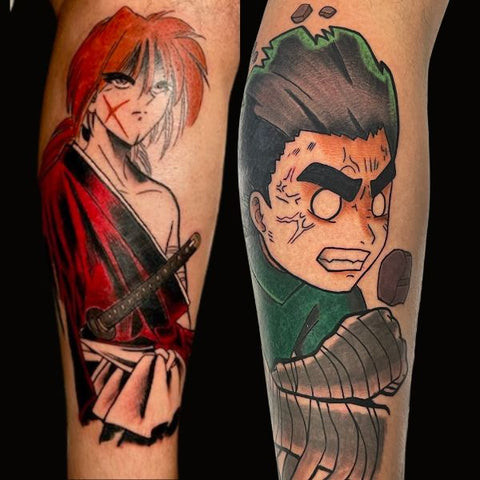 Anime Tattoo Style Different Tattoo Styles
Anime Tattoo Style Different Tattoo Styles
Anime Tattoo Style Different Tattoo Styles by Jah captures the vibrant and dynamic aesthetics of Japanese animation, appealing to anime enthusiasts.
2.19. Small
Refers to tattoos that are small in size and can be done in various styles. Small tattoos offer a discreet and versatile form of self-expression. These tattoos can be placed virtually anywhere on the body and can depict various subjects, from simple symbols to intricate designs. Small tattoos are popular as first tattoos or as additions to existing collections. The key to a successful small tattoo is to choose a design that is clear, concise, and well-executed, ensuring that it remains legible over time.
Small Tattoo Style by Sarah showcases the versatility of small designs, proving that impactful art can come in compact sizes.
2.20. Micro
Extremely small tattoos that require high precision and skill. Micro tattoos push the boundaries of tattoo artistry, creating incredibly detailed designs on a miniature scale. These tattoos require specialized equipment and exceptional skill to execute properly. Micro tattoos are ideal for those seeking subtle and understated body art that can be easily concealed. The choice of design is crucial, as the limited space requires simplicity and clarity to ensure that the tattoo remains legible.
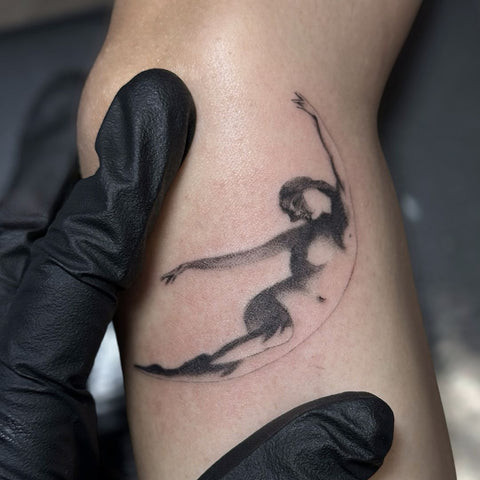 Micro Tattoo Style Different Tattoo Styles
Micro Tattoo Style Different Tattoo Styles
Micro Tattoo Style Different Tattoo Styles by Sarah exemplifies the precision and skill required to create detailed designs on a miniature scale.
2.21. Abstract
Non-representational tattoos that focus on shapes, colors, and forms. Abstract tattoos offer a departure from traditional representational art. These tattoos prioritize visual impact and emotional expression over realistic depictions. Abstract tattoos can incorporate various shapes, colors, and textures, creating a unique and dynamic composition. This style appeals to those who appreciate artistic experimentation and non-conventional aesthetics.
Abstract Tattoo Style by Sarah uses shapes and forms to create visually striking designs that deviate from representational art.
2.22. 3D
Creates the illusion of depth and dimension. 3D tattoos use shading, perspective, and trompe-l’oeil techniques to create the illusion of depth and dimension. These tattoos can depict objects that appear to float above the skin or create the illusion of holes or textures. 3D tattoos require exceptional skill and attention to detail to achieve a convincing three-dimensional effect. This style is visually stunning and creates a captivating illusion.
3D Tattoo Style by Ryan uses shading and perspective to create the illusion of depth and dimension, making the tattoo appear to pop off the skin.
2.23. Cartoon
Inspired by classic animated cartoons. Cartoon tattoos capture the playful and whimsical aesthetics of classic animated cartoons. These tattoos often depict iconic characters, scenes, or symbols from beloved cartoon series. Cartoon tattoos require a skilled artist who can accurately replicate the distinctive style of cartoon art, including bold lines, bright colors, and expressive features. This style appeals to fans of animation who want to express their nostalgia and love for cartoon culture through body art.
Cartoon Tattoo Style by Sarah captures the playful and whimsical aesthetics of classic animated cartoons.
2.24. Continuous Line Contour
Created with a single, unbroken line. Continuous line contour tattoos showcase the beauty of simplicity and minimalism. These tattoos are created using a single, unbroken line to define the contours of a subject. Continuous line contour tattoos require a skilled artist with a steady hand and a keen eye for detail. This style is elegant and understated, perfect for those who appreciate clean lines and minimalist aesthetics.
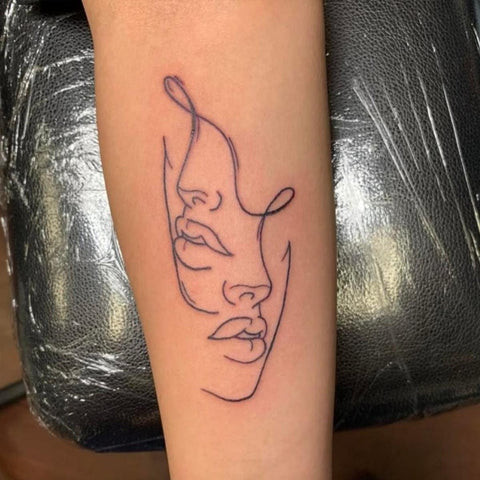 Continuous Line Contour Tattoo Style
Continuous Line Contour Tattoo Style
Continuous Line Contour Tattoo Style by Sara demonstrates the elegance of creating a design with a single, unbroken line, emphasizing form and simplicity.
2.25. Portrait
Realistic depictions of people or animals. Portrait tattoos capture the likeness of a person or animal with stunning accuracy. These tattoos require exceptional skill and attention to detail to replicate the subject’s features, expressions, and personality. Portrait tattoos can be done in color or black and grey, and can range from simple to highly complex. A well-executed portrait tattoo is a testament to the artist’s skill and the wearer’s emotional connection to the subject.
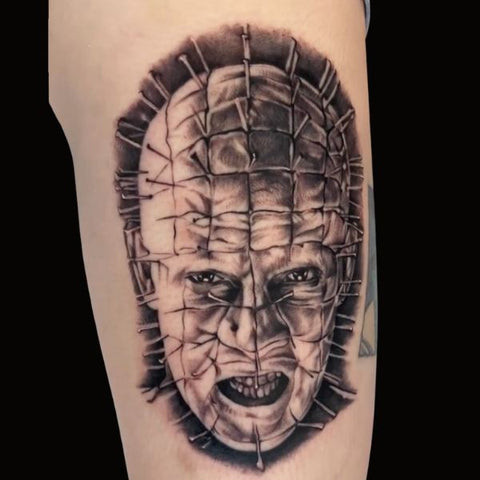 Portrait Tattoo Style Pinhead Different Tattoo Styles
Portrait Tattoo Style Pinhead Different Tattoo Styles
Portrait Tattoo Style Pinhead Different Tattoo Styles by Wulf captures the likeness of a person with stunning accuracy and detail.
2.26. Pet and Animal
Celebrates beloved animal companions through various artistic styles. Animal tattoos offer a way to honor and celebrate the unique bond between humans and animals. These tattoos can depict various animals, from pets to wildlife, and can be rendered in different styles, such as realism, cartoon, or watercolor. Animal tattoos are deeply meaningful and can serve as a lasting tribute to a beloved companion or a symbol of personal connection to the natural world.
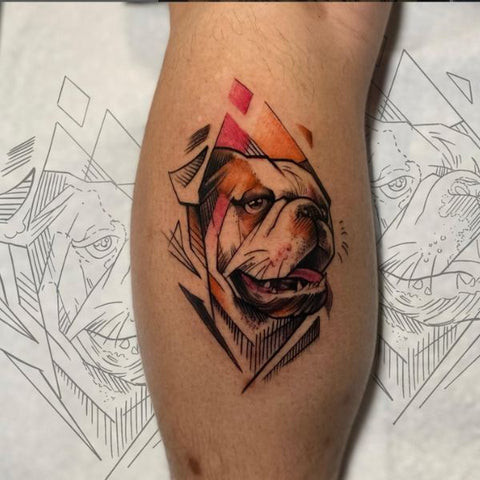 Pet and Animal Tattoo Style Bulldog Tattoo Different Tattoo Styles
Pet and Animal Tattoo Style Bulldog Tattoo Different Tattoo Styles
Animal & Pet Tattoo Style by Wulf celebrates the unique bond between humans and animals, capturing their essence through art.
2.27. Sketch
Mimics the look of a pencil sketch. Sketch tattoos capture the raw and expressive energy of a pencil drawing. These tattoos often feature loose lines, shading, and a sense of unfinishedness, creating a dynamic and organic aesthetic. Sketch tattoos can depict various subjects and can be done in black and grey or color. This style appeals to those who appreciate artistic spontaneity and a less polished aesthetic.
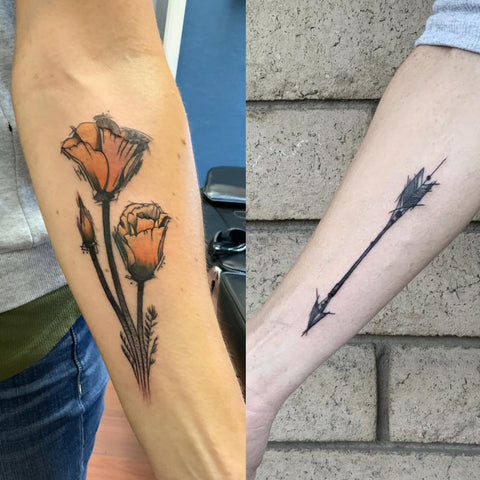 Sketch Style Tattoo
Sketch Style Tattoo
Sketch Tattoo Style By Devon mimics the look of a pencil drawing, creating a raw and expressive aesthetic.
2.28. Video Game
Inspired by video game characters and aesthetics. Video game tattoos offer a way for gamers to express their passion and connection to the virtual world. These tattoos can depict iconic characters, items, or symbols from popular video games. Video game tattoos require a skilled artist who can accurately replicate the distinctive style of video game art, including pixel art, 3D renderings, and stylized characters. This style appeals to gamers who want to showcase their love for video game culture through body art.
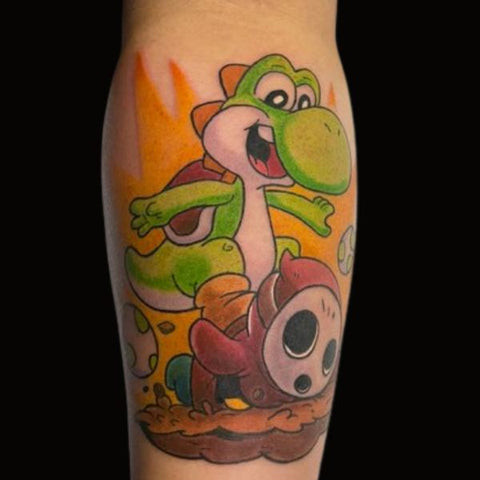 Video Game Tattoo Style Yoshi Tattoo Different Tattoo Styles
Video Game Tattoo Style Yoshi Tattoo Different Tattoo Styles
Video Game Tattoo Style Yoshi Tattoo Different Tattoo Styles shows the vibrant and dynamic world of video games through body art.
3. How Do I Choose the Right Tattoo Style for Me?
Consider your personal aesthetic, the subject matter you want to depict, and the skills of the tattoo artist. Choosing the right tattoo style involves several considerations. Start by identifying your personal aesthetic preferences. Do you prefer bold and graphic designs, or delicate and intricate artwork? Consider the subject matter you want to depict and how it would translate into different styles. Research tattoo artists who specialize in the styles that appeal to you and review their portfolios to ensure they have the skills and experience to bring your vision to life.
4. What Should I Consider When Choosing a Tattoo Artist for a Specific Style?
Look for an artist with a strong portfolio showcasing their expertise in that style. When selecting a tattoo artist for a specific style, it’s essential to thoroughly research their experience and expertise. Look for artists with extensive portfolios showcasing their proficiency in the style you desire. Check online reviews and testimonials from previous clients to gauge their satisfaction with the artist’s work. Schedule a consultation with the artist to discuss your ideas, ask questions, and assess their communication and professionalism. A skilled and experienced artist will provide valuable insights and guidance to ensure your tattoo is a masterpiece.
5. How Can I Find Inspiration for My Tattoo Design?
Explore tattooat.com for a vast collection of designs, artists, and studios. Look to art, nature, and personal experiences. Finding inspiration for your tattoo design can be an exciting journey of self-discovery and artistic exploration. Explore online resources like tattooat.com for a vast collection of designs, artists, and studios. Draw inspiration from various sources, such as art, nature, personal experiences, and cultural symbols. Create a mood board or a collection of images that resonate with you and communicate your vision to the tattoo artist.
6. What are the Current Trends in Tattoo Styles in the USA?
Fine line, realism, and neo-traditional styles are gaining popularity in the USA. The American tattoo scene is constantly evolving, with new styles and trends emerging. Fine line tattoos, with their delicate details and minimalist aesthetic, have gained significant traction. Realism tattoos, showcasing lifelike portraits and scenes, continue to impress with their technical skill. Neo-traditional tattoos, blending classic elements with modern techniques, offer a fresh and vibrant approach to body art. Stay updated on the latest trends by following tattoo artists, attending tattoo conventions, and exploring online tattoo communities.
7. How Long Does a Tattoo Last and How Can I Ensure Its Longevity?
With proper care, a tattoo can last a lifetime. Follow the artist’s aftercare instructions, stay hydrated, and protect your tattoo from sun exposure. The longevity of a tattoo depends on various factors, including the quality of the ink, the skill of the artist, and your aftercare practices. Follow your tattoo artist’s aftercare instructions diligently, keeping the tattoo clean, moisturized, and protected from sun exposure. Stay hydrated, maintain a healthy lifestyle, and avoid excessive friction or trauma to the tattooed area. With proper care, your tattoo can remain vibrant and beautiful for a lifetime.
8. How Much Does a Tattoo Typically Cost?
Prices vary depending on the size, complexity, and artist’s experience. Tattoo prices vary depending on several factors, including the size and complexity of the design, the artist’s experience and reputation, the location of the studio, and the cost of materials. Research local tattoo studios, compare prices, and inquire about hourly rates or set prices for specific designs. Remember that quality comes at a price, and investing in a skilled artist is crucial for a safe and satisfying tattoo experience.
9. Is Getting a Tattoo Painful? What Can I Do to Manage the Pain?
Pain levels vary, but numbing creams and proper breathing techniques can help. Getting a tattoo involves some degree of discomfort, but pain levels vary depending on the individual, the location of the tattoo, and the artist’s technique. Certain areas of the body, such as the ribs, feet, and hands, tend to be more sensitive than others. Manage the pain by staying relaxed, breathing deeply, and communicating with your tattoo artist. Numbing creams or sprays can also help to reduce discomfort during the tattooing process.
10. What Aftercare Is Crucial for a New Tattoo?
Keep the area clean, moisturized, and protected from the sun. Proper aftercare is crucial for a new tattoo to heal properly and maintain its vibrancy. Follow your tattoo artist’s instructions diligently, keeping the area clean with mild soap and water, applying a thin layer of moisturizer, and protecting the tattoo from sun exposure. Avoid picking or scratching the tattoo, and wear loose-fitting clothing to prevent friction. With proper aftercare, your tattoo will heal beautifully and remain a lasting work of art.
11. Are There Any Risks Associated with Getting a Tattoo?
Yes, risks include infections, allergic reactions, and scarring. Choosing a reputable artist and following aftercare instructions minimizes these risks. Getting a tattoo involves some risks, including infections, allergic reactions, scarring, and keloid formation. Minimize these risks by choosing a licensed and reputable tattoo artist who follows strict hygiene and sterilization protocols. Disclose any allergies or medical conditions to your artist, and follow their aftercare instructions diligently. If you experience any signs of infection or adverse reactions, seek medical attention promptly.
12. What Are Some Common Tattoo Regrets and How Can I Avoid Them?
Choosing trendy designs, getting a tattoo while intoxicated, and not researching the artist are common regrets. Avoid tattoo regrets by carefully considering your design, choosing a reputable artist, and avoiding impulsive decisions. Take your time, research different styles and artists, and ensure that the design reflects your personal values and aesthetic preferences. Avoid getting a tattoo while intoxicated or under pressure, and trust your instincts when choosing an artist. A well-planned and carefully executed tattoo will be a source of pride and joy for years to come.
13. What If I Want to Remove a Tattoo in the Future?
Laser tattoo removal is the most common method. Consult with a dermatologist or tattoo removal specialist. If you regret a tattoo and want to remove it in the future, laser tattoo removal is the most common and effective method. Consult with a qualified dermatologist or tattoo removal specialist to assess your tattoo and determine the best course of action. Laser tattoo removal involves multiple sessions and can be costly, so it’s essential to have realistic expectations and understand the process thoroughly.
14. What Are Some Emerging Tattoo Styles to Watch Out For?
UV tattoos, blackout tattoos, and single-needle tattoos are gaining attention. As the tattoo industry evolves, new styles and techniques continue to emerge. UV tattoos, which glow under ultraviolet light, offer a unique and futuristic aesthetic. Blackout tattoos, covering large areas of the body with solid black ink, create a dramatic and bold statement. Single-needle tattoos, created with a single needle for incredibly fine details, showcase the precision and artistry of minimalist design. Keep an eye on these emerging styles as they continue to shape the future of tattoo art.
15. Can Tattoos Be Used for Medical Purposes?
Yes, medical tattoos can mark radiation sites or indicate medical conditions. Medical tattoos serve various purposes, such as marking radiation sites for cancer treatment, indicating medical conditions like diabetes or allergies, or creating realistic areolas after breast reconstruction. Medical tattoos require specialized training and expertise to ensure accuracy and safety. These tattoos can improve patients’ quality of life and provide essential information to healthcare providers.
16. How Do Tattoos Interact With Aging Skin?
Tattoos can fade and blur over time. Proper hydration, sun protection, and moisturizing can minimize these effects. As skin ages, it loses elasticity and collagen, which can affect the appearance of tattoos. Tattoos may fade, blur, or stretch over time. Minimize these effects by staying hydrated, protecting your skin from sun exposure, and moisturizing regularly. Consider the placement of your tattoo, as areas prone to stretching or wrinkling may experience more significant changes over time.
17. Can I Get a Tattoo If I Have Sensitive Skin or Allergies?
Consult with a dermatologist and choose hypoallergenic inks. If you have sensitive skin or allergies, it’s crucial to take precautions before getting a tattoo. Consult with a dermatologist to assess your skin and identify any potential allergens or sensitivities. Choose hypoallergenic inks and avoid dyes that are known to cause allergic reactions. Inform your tattoo artist about your skin sensitivities and request a patch test before getting the tattoo. Monitor your skin closely after getting the tattoo, and seek medical attention if you experience any adverse reactions.
18. How Can I Support Tattoo Artists and the Tattoo Community?
Attend tattoo conventions, purchase art prints, and promote artists on social media. Supporting tattoo artists and the tattoo community is essential for preserving and promoting this art form. Attend tattoo conventions, purchase art prints or merchandise from artists, and promote their work on social media. Leave positive reviews and testimonials, and recommend artists to friends and family. By supporting tattoo artists, you contribute to the growth and vitality of the tattoo community.
19. What is the Significance of Tattoo Placement on the Body?
Placement can enhance the design and reflect personal meaning. The placement of a tattoo on the body can enhance its visual impact and reflect personal meaning. Consider the size, shape, and flow of the design, and choose a placement that complements your anatomy and personal style. Certain placements, such as the chest, back, or arms, offer more space for larger and more intricate designs. Smaller tattoos can be placed on the wrists, ankles, or fingers for a subtle and discreet effect.
20. How Has Tattoo Culture Evolved Over Time?
From ancient rituals to modern self-expression, tattoos have a rich history. Tattoo culture has evolved significantly over time, from ancient rituals and tribal markings to modern forms of self-expression and artistic expression. Tattoos have been used to signify status, identity, spirituality, and rebellion throughout history. Today, tattoos are more widely accepted and celebrated as a form of personal art, with diverse styles and techniques catering to individual preferences.
Ready to explore the world of tattoos and find your perfect style? Visit tattooat.com today for inspiration, artist recommendations, and expert advice. Discover the art that speaks to you and begin your journey of self-expression through ink. Find tattoo design ideas, connect with talented artists, and read informative articles to guide you through every step of the process.